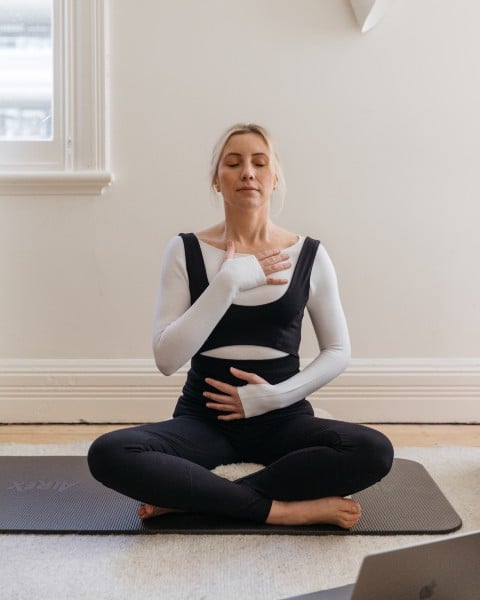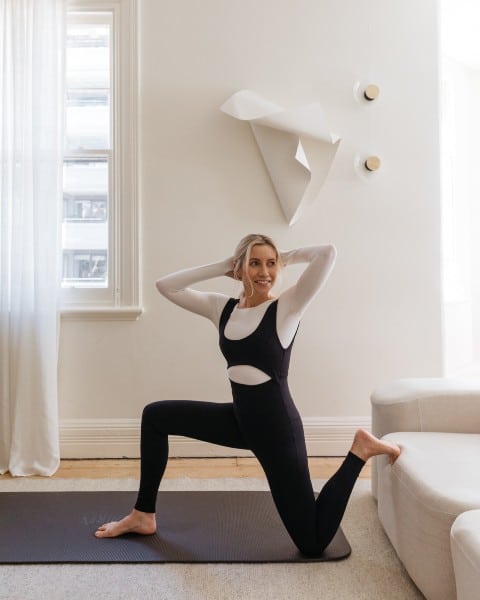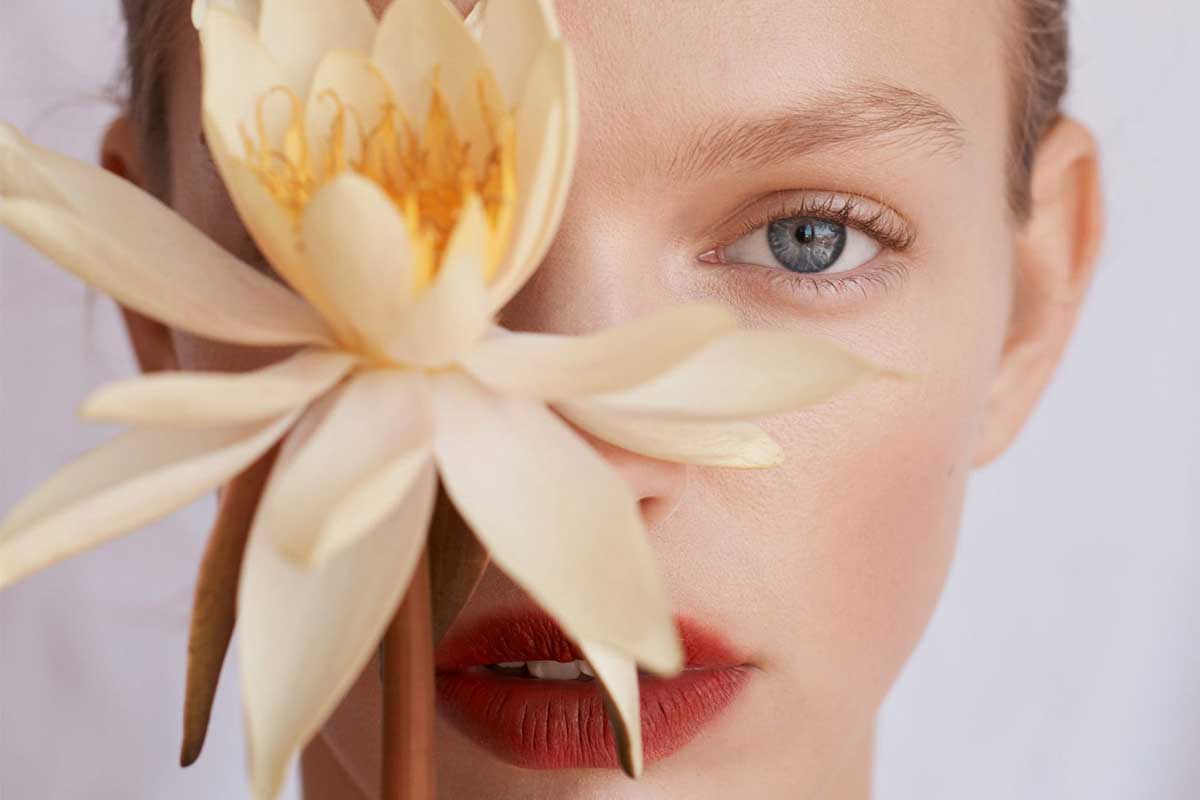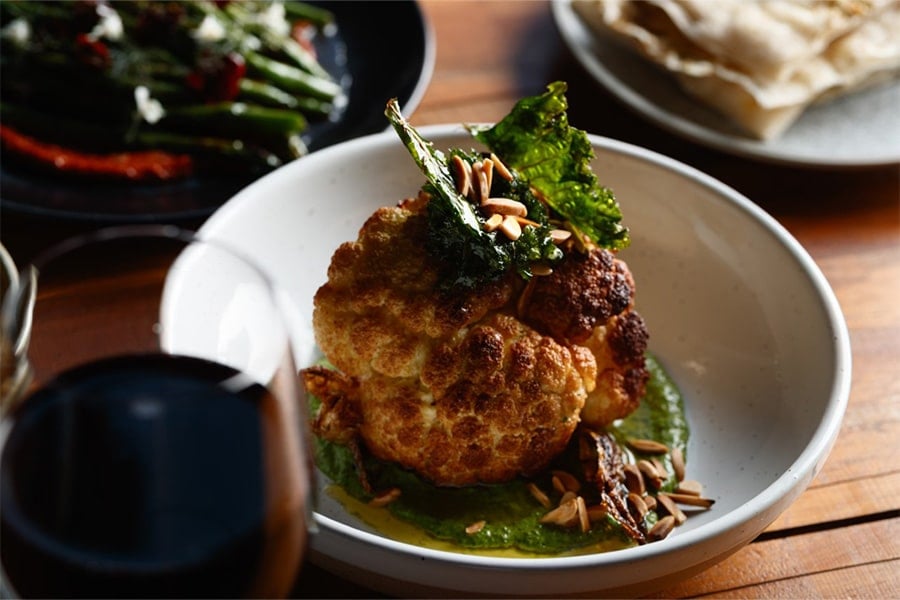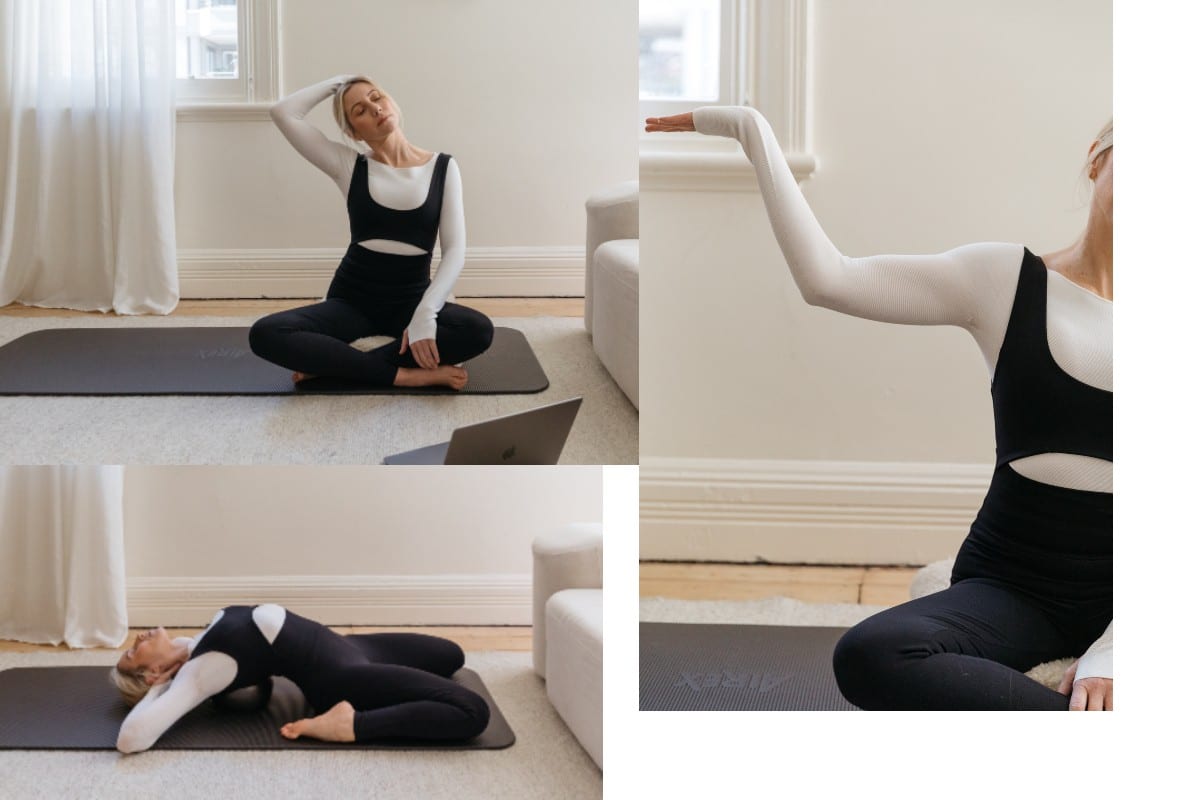
There's no doubt that we're all holding a little more stress in the body than usual right about now. Whether it's the pressure of ongoing lockdowns or the chaos of the general day to day, there's never been a more important time to keep our minds and bodies in check. Knowing where our body holds stress and how to release it is crucial to ironing out the kinks in a safe and 'stay at home' way. It only makes sense then, that the first instalment of RUSSH and Fluidform's workout series should focus on our biggest challenge, through a specially curated hips and glutes workout.
Each month, Fluidform will share an exclusively designed and tailored workout series with the RUSSH audience. The workouts will focus on a range areas and will showcase how you can use Pilates and different exercises to target these concerns. To kick off the series, founder and principal instructor of Fluidform, Kirsten King, is helping us tackle one of life's biggest challenges – stress.
Pilates is one of the best ways to help alleviate stress and tightness in the body and mind. The approach is grounded in a powerful combination of both movement and breathwork, which can help to naturally loosen muscles in the body.
"Focusing on your breathing naturally works to clear your mind; helping switch off other areas of the body and mind that are overworking as a reaction to stress, be it a deadline at work, social pressures, personal challenges," shares King.
As she tells us, the hips and glutes are two areas that we should be giving more focus to when exercising. It's an area of the body where stress can easily get "trapped" for prolonged periods of time without us even realising it.
The lower-body hips and glutes workout below aims to reverse this cycle; increasing mobility in our hips, releasing tightness and tension and creating strength in our hips and glutes to improve postural alignment and functional movements. But before we get started, we've asked King to answer three of our biggest questions when it comes to managing stress through movement.
Can Pilates help with stress?
Pilates and specifically functional movement, helps to both prevent and relieve stress and traditional Pilates uses breathwork to improve the effectiveness of specific exercises.
Technically speaking, this specific combination of functional movement and breath work trains your intercostal muscles (muscles that help you breathe), increasing your lung capacity and flexibility through your ribcage and increases the exchange of oxygen into carbon. From a lifestyle perspective, this combination helps to calm the nervous system, improve your sleep quality and prevent rising cortisol levels (our stress hormone).
Nestled into the psoas muscles (running from our lumbar spine through either groin controlling our hip flexion) are 1. the kidneys, responsible for filtering toxins in the body, and 2. adrenal glands, which control the fright, flight or freeze response.
This is where we begin to understand the body – mind – emotional connection.
The fight or flight response is our body's natural reaction to perceived danger (physical, mental and emotional). When you're under any kind of mental or emotional stress, your psoas muscle responds by contracting. Overtime, this develops a tightness and discomfort across our hips.
When we consider this link between our psoas muscles and flight or fight reaction to stress, we understand the concept of stress getting "trapped" in the hips or literally holding stress in our hips.
Having tight, restrictive hips compromises our entire functional alignment, posture and breathing – all factors that impact our body’s physical and mental capability to deal with stress.
Where do we hold stress?
Stress generally starts in our chest, gut and head (feeling a tightness in our chest, trouble breathing, a sinking feeling in our gut and noise in our head). Overtime, we start to hold this neglected and recurrent stress in our hips, neck and shoulders. This is a combination of built up stress, and also poor posture and overlooked lifestyle choices as a result of stress.
How often should we stretch?
Everyday! Movement is medicine.
Fluidform hips and glutes activation workout: Movement by movement
King recommends using arm weights with this sequence and a small Pilates ball if you have one available. In less than 20 minutes, this workout will have you engaging your hips and glutes in a whole different way. Watch the video and follow the step-by-step guide below.
1. Warrior lunge position hold.
2. Warrior lunge position with an added pulse.
3. Remaining in warrior lunge position, place your hands behind your head and lift your heel up and down.
4. Take your arms out to the side again and incorporate open and close movement with your heel, lunging deeper into the warrior lunge as you go.
5. Switch feet position over to the opposite side and repeat movements 1-4 again.
6. Place feet in a wide second position, arms out to the side. Opening the arms as your knees bend and straightening arms to meet in the centre on the reverse.
7. Rotate the body to the side so that feet and hips are in parallel with the arms in front – lunge and bend the knees until the back knee touches the ground. Come back to the centre before you transition to the other side and repeat the movement again.
8. Place the left foot in front and the right behind, going into a slight lunge position with your hands on your hips. Gently lean the body forward, taking your hands by your side and slightly behind your back. As your arms push forward to be in line with your eyes, transfer your weight forward until your back leg is straight.
9. Take the arms behind your back again and bend both knees, pulsing the arms up and down.
10. Switch feet position over to the opposite side and repeat movements 8-9 again.
11. Onto the floor, bend your left leg in front and your right knee behind with your toes tucked under. Use your arms to help lift you from the ground to a standing lunge position and back down again to the starting position.
12. Switch legs and repeat movement 11.
13. Place your ball in the middle of the mat, putting your heels on the ball while in Pilates V position. Once you are comfortable, bend your knees in a deep plié as your arms come up in front of you, keeping your knees and hips turned out.
14. Lowering yourself down into the plié position and hold, pulsing up and down as your heels bounce into the ball.
15. Going back into the first warrior position, place the ball under the heel of the front foot. Pressing through the heel, lower into a plié position as your arms extend to the side.
16. Hold plié position and place hands on hips, pulsing up and down as your heel bounces into the ball.
17. Switch legs and repeat movements 15-16 again.
18. Down on your mat in a kneeling position with both knees, place hands in front under your shoulders and toes tucked under. Slowly transition into a plank position with both legs extended out. Take one leg and swing the leg in towards your stomach – bending the knee as you come in – then straightening on the outwards phase.
19. Repeat movement 18 on the other leg.
20. Make sure to finish your hips and glutes workout with an active stretch.

